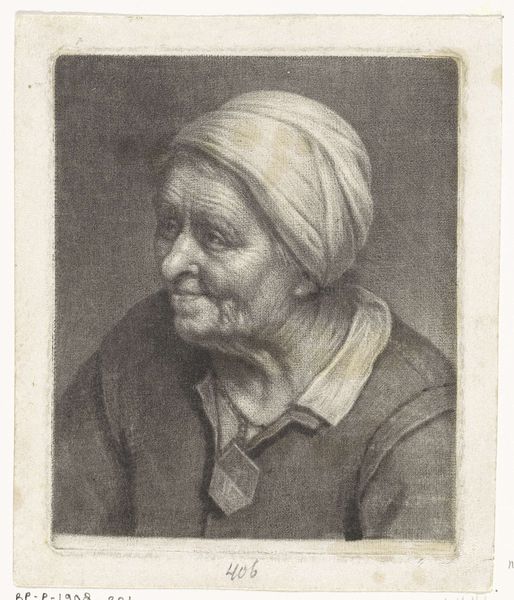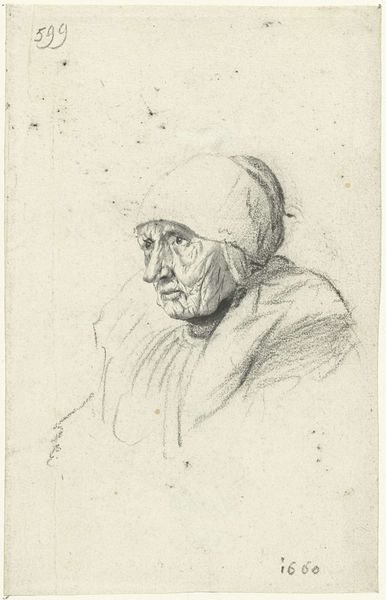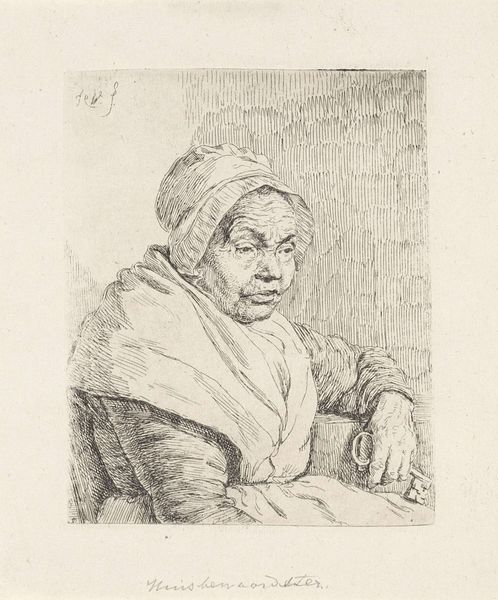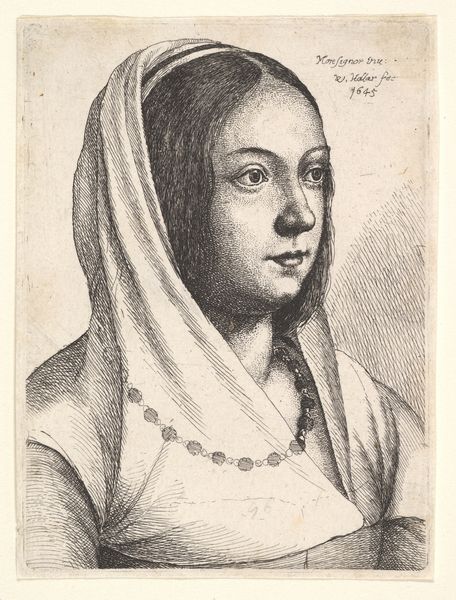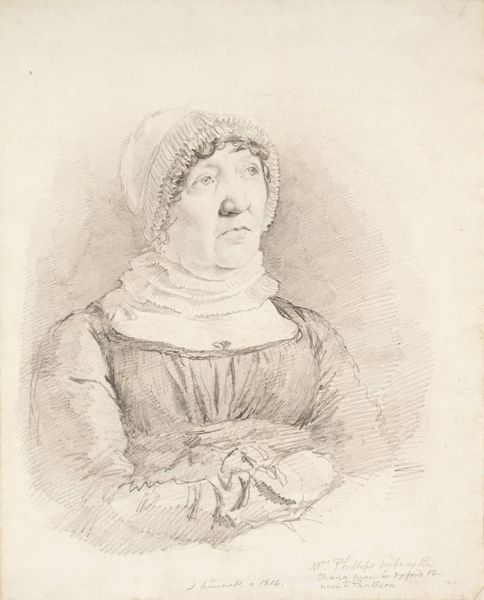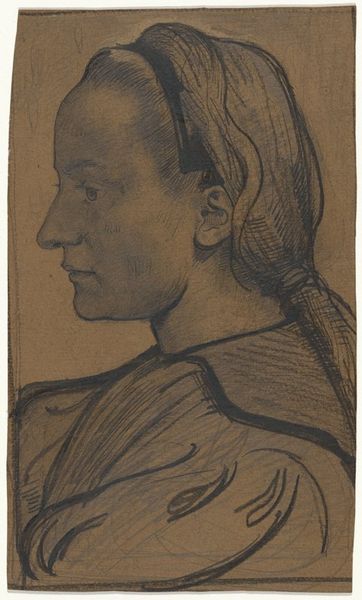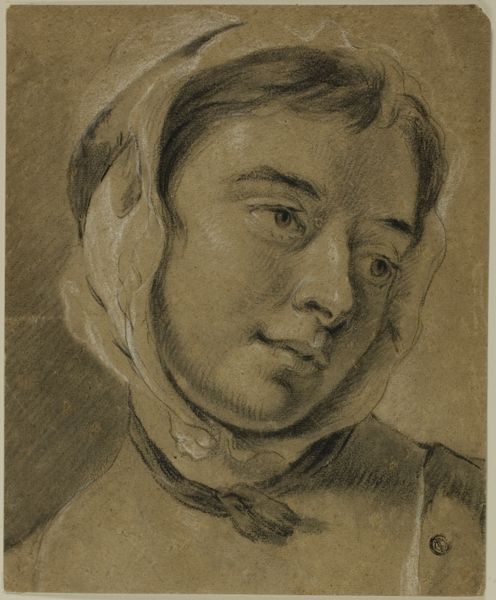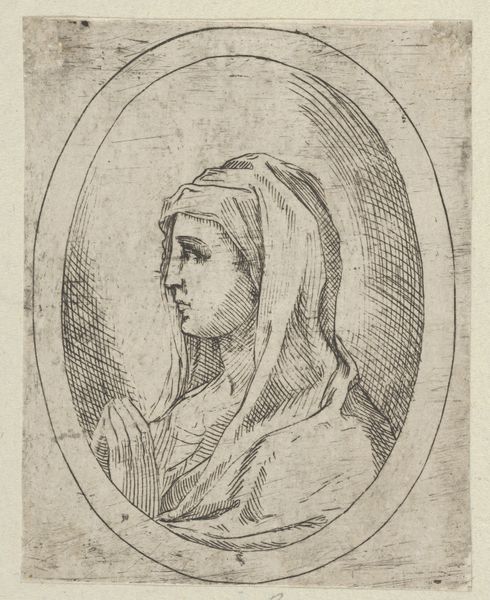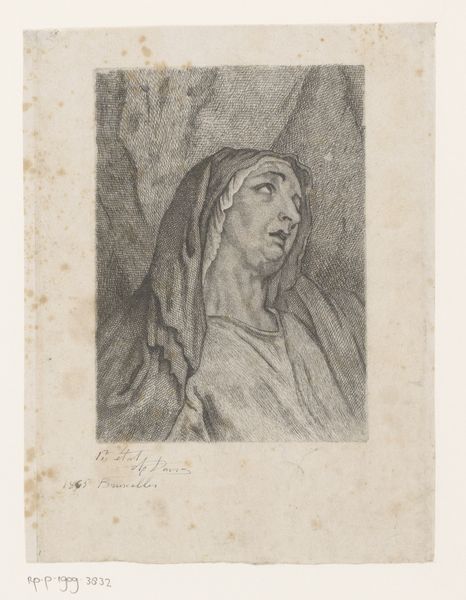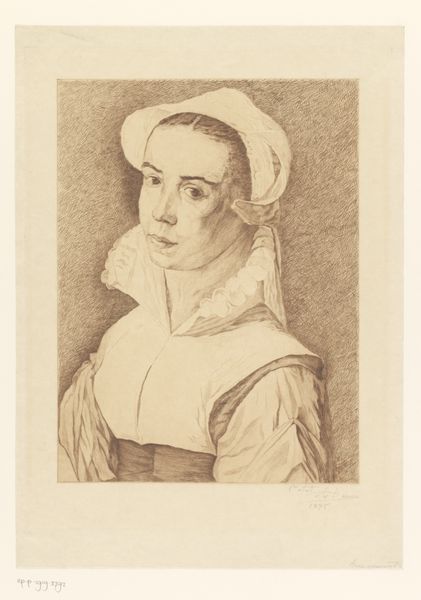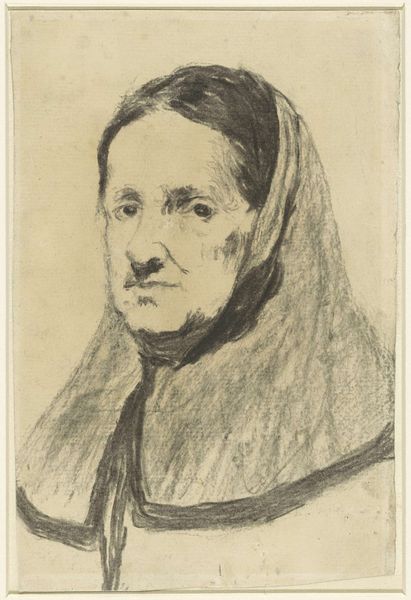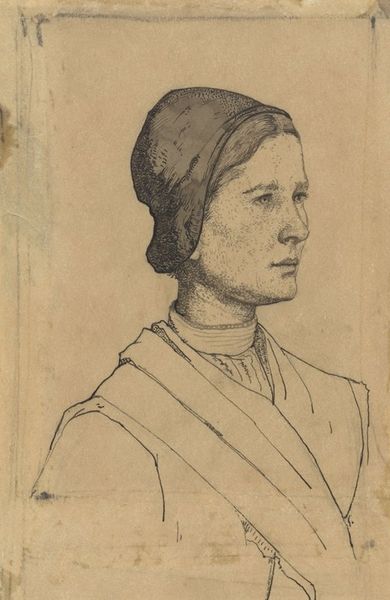
Dimensions: height 42 mm, width 35 mm
Copyright: Rijks Museum: Open Domain
Johannes Janson made this print of a woman’s bust sometime in the 18th century. It's a tiny thing, barely bigger than a postage stamp, and made using a process called etching. With etching, you cover a metal plate with a waxy ground, then scratch your design into it. The plate is then submerged in acid, which bites into the exposed lines. Ink fills these lines, the surface is wiped clean, and the image is transferred to paper under great pressure. The resulting image is characterized by a fine, slightly irregular line. You can see how Janson used this to great effect, creating a sense of depth and texture in the woman’s face and headscarf. Printmaking was an important part of the burgeoning visual culture of the 1700s, allowing images to be reproduced and disseminated widely. It was also a highly skilled craft, requiring mastery of both the chemical and the mechanical processes involved. Looking at this small print, we can appreciate not only Janson’s artistry but also the rich history of printmaking as a medium.
Comments
No comments
Be the first to comment and join the conversation on the ultimate creative platform.
